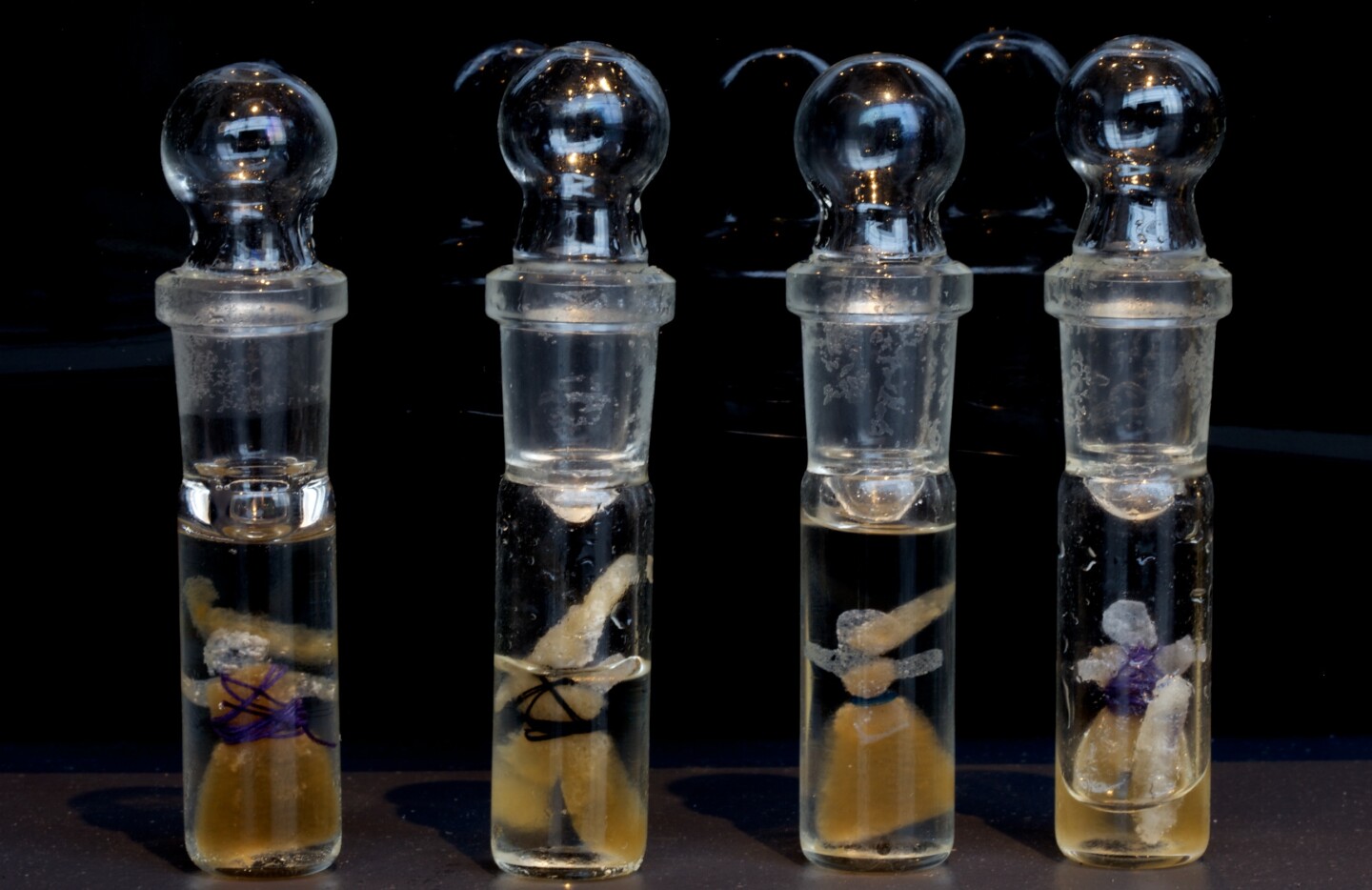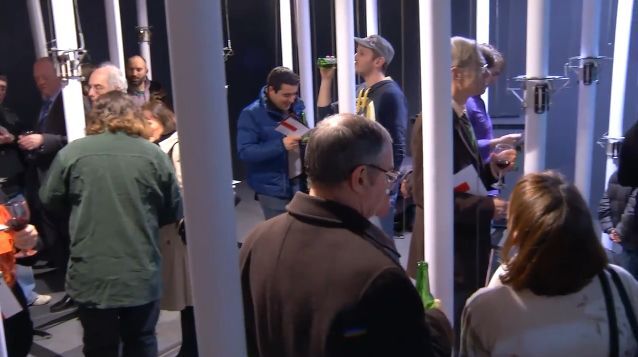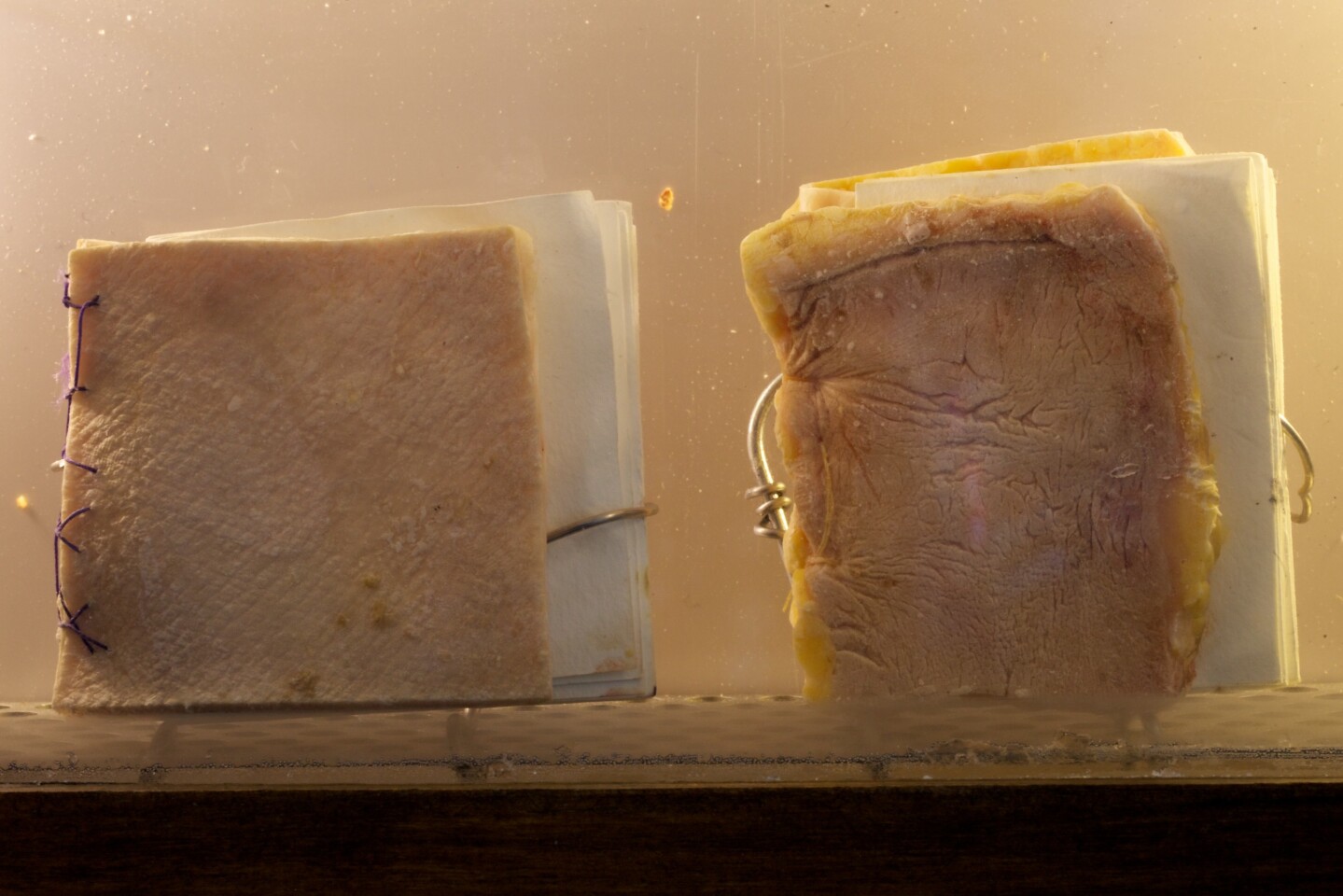Should you find yourself in Dublin, pondering the social and ethical ramifications of advances in bioscience, you really ought to check out VISCERAL: THE LIVING ART EXPERIMENT at Trinity College’s Science Gallery. The show was put together by the University of Western Australia’s SymboticA art-science residency program, and features 15 works of art (or are they works of science?) that incorporate living tissue, created by SymboticA researchers from several countries. It’s intended to be an exploration of the boundaries between art and science, and of “our changing understandings and perceptions of life in the light of rapid developments in the life sciences and their applied technologies.” It’s also a chance to see books grown out of human skin cells.
“There is something that makes us a little uneasy, perhaps even queasy, about the idea of creating artworks from living tissue,” said Science Gallery director Michael John Gorman. “While we are increasingly comfortable with the use of digital technologies for artistic purposes, the very idea of tissue-engineering becoming an art form makes us squirm. The work exhibited in VISCERAL forms a series of provocations, asking us to consider the myriad of possible implications of our new biotechnological toolkit.”

One of the exhibits is the Semi-Living Worry Dolls, created by Australia’s Oron Catts and Ionat Zurr. Inspired by traditional Guatemalan hand-crafted worry dolls, they were reportedly the first tissue-engineered sculptures to ever be presented “alive” in a gallery, when they made their debut 11 years ago. The dolls are made from biodegradable polymers seeded with living cells, and housed within a micro-gravity bioreactor. Throughout the course of the exhibit, the cells will gradually replace the polymers, making the dolls – sort of – come to life.

In Silent Barrage, created by the Neurotica collective in collaboration with Georgia Tech, an array of pole-climbing robots move in response to the activity of 50,000 neurons in a petri dish. Cameras track the movements of visitors to the exhibit, which are digitized and then used to stimulate the neurons. In this way, the audience both dictates the activity of the neurons, yet are also subjected to it. It is hoped that observations made in Silent Barrage may actually help scientists better understand how to treat neurological disorders such as epilepsy.

And yes, there are the books made out of skin. Canadian Tagny Duff’s Cryobook Archives features several handmade books, all made from human and pig tissue, skin cells, and a synthetic biological virus. They were created using “tissue culture engineering techniques such as transfection and immunohistochemical staining procedures along with traditional book binding techniques,” and are housed in a library-like portable freezer.
Other SymboticA projects on display feature things like live crickets listening to a lecture on sex, a “living relic” made from an anonymous donor’s skin cells, and a sleeping subject whose body is moved in order to draw a picture using their brain waves.
VISCERAL: THE LIVING ART EXPERIMENT runs until February 25th.
Via New Scientist











